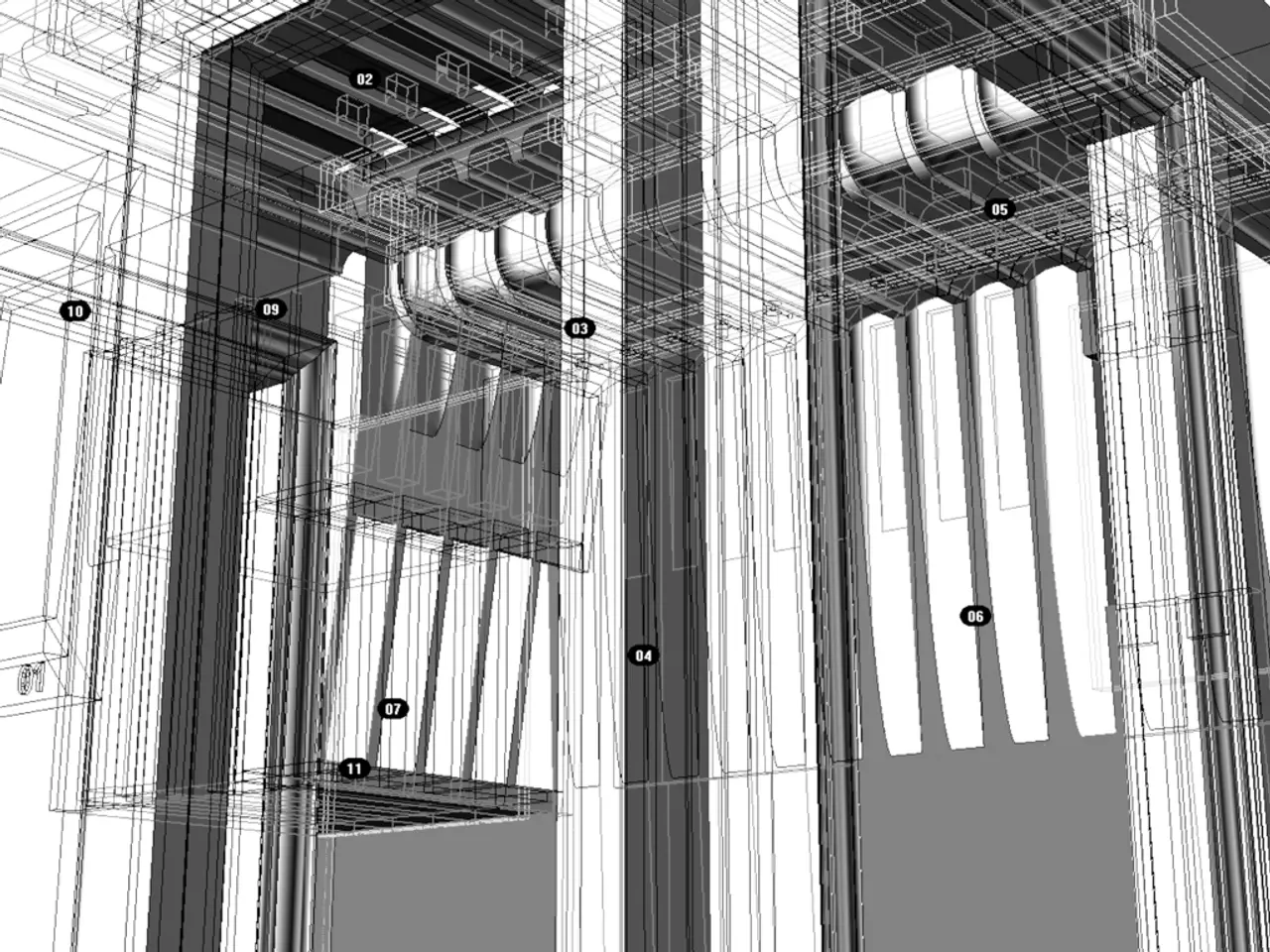Interviews: Probing Questions for Cyndee Hoagland, High-Ranking Executive at Trimble
In the realm of modern construction, digital technology is revolutionising the way we design, build, and maintain our infrastructure. One company at the forefront of this transformation is Trimble, an industrial technology company that specialises in digital twin technology for various industries, including transportation and geospatial.
The Bipartisan Infrastructure Law (BIL) has recognised the potential of advanced digital construction management systems, allocating funding for their adoption. Trimble's expertise lies in capturing and processing geospatial, construction, project management, and asset maintenance data, making it a natural choice for such projects.
Trimble's digital twin technology is particularly beneficial in highway improvement projects. By deploying 3D models that bridge asset design, construction, and operations, it enables collaborative work in real-time, fostering efficiency and transparency among stakeholders.
One documented use of this technology is by India's National Highways Authority (NHAI), which employs a digital twin platform for highway project management. This enables real-time monitoring of the project's progress and conditions, improving oversight and decision-making during highway construction or improvement.
Trimble Connect, a cloud-based backbone, synchronises survey data, design, and construction information across office and field teams. This connected workflow enhances data management and sharing, allowing for model-based feature collection, seamless GIS integration, and streamlined land survey campaigns necessary for highway projects.
Trimble's technology also facilitates stakeholder communication, landowner engagement, and transparent project planning, which are critical in highway expansions or upgrades adjacent to populated areas. Through custom applications built using Trimble Access and augmented reality visualization (Trimble SiteVision), project teams can visualise infrastructure elements directly on the terrain.
Moreover, the integration of Trimble's Internet Base Station Service (IBSS) with digital twin workflows provides more accurate and reliable RTK GNSS corrections over the internet for surveying tasks on highway projects, improving accuracy and flexibility in field measurements crucial for highway improvement.
Digital twins also provide detailed information to those who must maintain the asset once it's complete, aiding in more efficient maintenance and operation. For instance, the Minnesota Department of Transportation (MnDOT) initiated a $158 million project to improve Highway 169 in Elk River, Minnesota, using a 3D digital, paperless model. This innovative approach resulted in an estimated $10 million in savings during the planning phase.
The use of digital twins and collaborative digital as-built approaches can lead to assets being designed and built faster, cheaper, and more efficiently. Currently, only 28% of owners report a similar level of digital data exchange with external companies, indicating a vast potential for growth and improvement in this area.
The Federal Highway Administration (FHWA) advocates for the adoption of digital project delivery tools, and the Advanced Digital Construction Management Systems (ADCMS) grant programme, funded at $20 million per year for a total of $100 million over five years through FHWA, aims to maximise interoperability, boost productivity, manage complexity, reduce project delays and cost overruns, and enhance safety and quality.
In conclusion, Trimble's digital twin technology is transforming the way we approach highway infrastructure projects, offering real-time monitoring, integrated survey and design workflows, stakeholder visualization tools, and enhanced GNSS-based surveying, all aimed at improving efficiency, accuracy, and communication. As more organisations embrace digital twins and collaborative digital as-built approaches, we can expect to see faster, cheaper, and more efficient infrastructure projects in the future.
- The Bipartisan Infrastructure Law has allocated funding for the adoption of advanced digital construction management systems, recognizing their potential in revolutionizing infrastructure construction, much like Trimble's digital twin technology is doing.
- Trimble's digital twin technology, leveraging artificial intelligence and data, not only benefits highway improvement projects but also aids in the efficient maintenance and operation of assets once completed, as seen in the Minnesota Department of Transportation's Highway 169 improvement project.
- The Federal Highway Administration advocates for the adoption of digital project delivery tools, such as Trimble's digital twin technology, to increase interoperability, boost productivity, reduce project delays and cost overruns, and enhance safety and quality in infrastructure projects.




